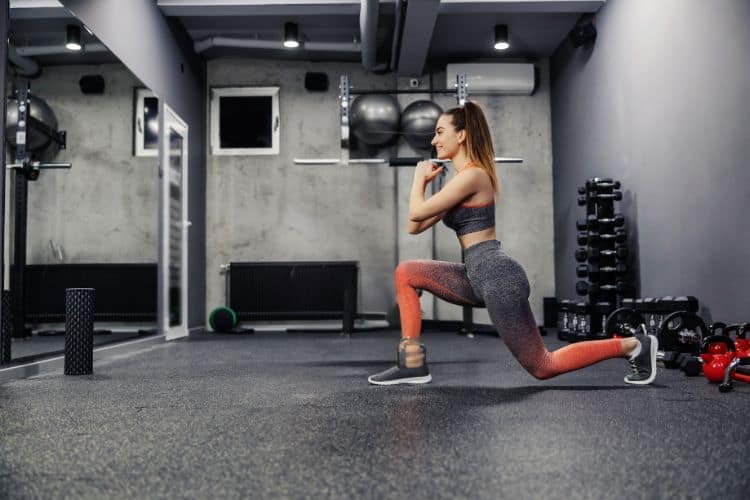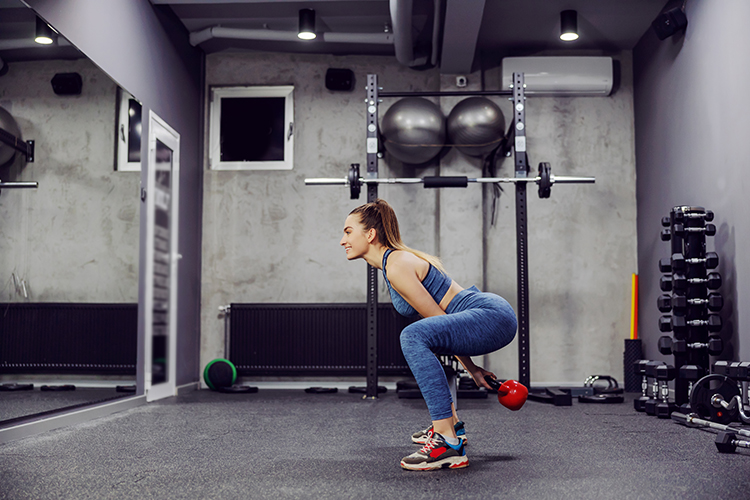Sign up for workout ideas, training advice, reviews of the latest gear and more.






Strength training has long been touted for its numerous benefits, including improved muscle tone, increased metabolism, and enhanced overall health. For women, incorporating high-impact weight training into their fitness routine can be particularly transformative. This type of training not only builds physical strength but also boosts confidence, promotes bone density, and helps in maintaining a healthy weight. However, there are many misconceptions and hesitations surrounding women and weightlifting, which this guide aims to dispel.
One of the most common myths is that lifting heavy weights will cause women to develop large, bulky muscles. This misconception often discourages women from engaging in weight training. The reality is that women have lower levels of testosterone compared to men, which makes it difficult to gain significant muscle mass without an intensive bodybuilding regimen. Instead, high-impact weight training helps women build lean muscle, which leads to a toned and sculpted physique.
As women age, the risk of osteoporosis increases due to a natural decline in bone density. High-impact weight training is one of the most effective ways to combat this issue. The mechanical stress placed on bones during weightlifting stimulates bone-forming cells, which helps to strengthen bones and reduce the risk of fractures. This makes weight training a crucial component in a woman’s fitness routine, especially as she gets older.
High-impact weight training is incredibly effective for boosting metabolism. When you lift heavy weights, your body continues to burn calories even after the workout is over. This is known as the “afterburn effect” or excess post-exercise oxygen consumption (EPOC). By increasing muscle mass, you also increase your resting metabolic rate, meaning you burn more calories throughout the day, even when at rest. This makes weight training an excellent tool for fat loss and weight management.
Beyond aesthetics, high-impact weight training enhances functional strength. This means the strength gained in the gym translates into better performance in daily activities, such as lifting groceries, playing with your children, or even maintaining good posture at work. Building functional strength reduces the risk of injury and enhances your ability to perform everyday tasks with ease and confidence.
Before diving into high-impact weight training, it’s important to understand the basics. High-impact weight training involves lifting heavy weights with lower repetitions, focusing on compound movements that engage multiple muscle groups. These exercises are designed to increase overall strength, power, and muscle hypertrophy.
When designing a high-impact weight training routine, it’s important to focus on a balance between pushing and pulling movements, as well as upper and lower body exercises. A typical routine might include three to four workouts per week, with each session lasting about 45 minutes to an hour. Here’s an example of a weekly split:
Each workout should begin with a warm-up to prepare your muscles and joints for the heavier loads. This can include light cardio, dynamic stretching, and mobility exercises. After the warm-up, move on to the main lifts, starting with the heaviest and most challenging exercises when your energy levels are highest. Finish with accessory work that targets smaller muscle groups or specific weaknesses.
Progressive overload is the cornerstone of high-impact weight training. This principle involves gradually increasing the weight, reps, or intensity of your exercises over time to continue making progress. Without progressive overload, your muscles will adapt to the workload, and you’ll eventually hit a plateau. To avoid this, aim to increase the weight you lift by 5-10% each week, or add an extra rep or set when possible.
Keeping track of your progress is essential in high-impact weight training. Whether you use a workout journal, an app, or a simple spreadsheet, logging your weights, reps, and sets will help you see your improvements over time. This not only keeps you motivated but also ensures you’re consistently applying the principle of progressive overload.
Recovery is a crucial aspect of any high-impact weight training program. While it’s tempting to push yourself to the limit, your muscles need time to repair and grow stronger. This is why rest days are built into the weekly routine. On rest days, focus on activities that promote recovery, such as stretching, foam rolling, light cardio, or yoga. Additionally, ensure you’re getting enough sleep and fueling your body with the right nutrients to support muscle growth and recovery.
Nutrition plays a vital role in high-impact weight training. To build muscle and strength, your body needs a combination of macronutrients—protein, carbohydrates, and fats—as well as a variety of micronutrients. Protein is particularly important as it provides the building blocks (amino acids) necessary for muscle repair and growth. Aim to consume 1.2 to 2.2 grams of protein per kilogram of body weight each day, depending on your training intensity and goals.
Carbohydrates are the primary source of energy for your workouts. Consuming enough carbs ensures you have the glycogen stores needed to perform at your best. Complex carbohydrates like oats, sweet potatoes, and whole grains are excellent choices. Healthy fats, found in foods like avocados, nuts, and olive oil, are also essential for hormone production and overall health.
Pre-workout nutrition is about fueling your body with the right nutrients to optimize performance. A balanced meal or snack that includes both protein and carbohydrates 1-2 hours before your workout can help improve endurance and strength. For example, a smoothie with protein powder, banana, and spinach is a great pre-workout option.
Post-workout nutrition is crucial for recovery. Consuming a combination of protein and carbohydrates within 30 minutes to an hour after your workout helps replenish glycogen stores and kick-start muscle repair. A meal like grilled chicken with quinoa and steamed vegetables or a protein shake with a piece of fruit can be ideal.
While whole foods should be your primary source of nutrition, supplements can be a valuable addition to a high-impact weight training program. Here are some commonly used supplements:
One of the most important aspects of high-impact weight training is maintaining proper form and technique. Lifting heavy weights with poor form can lead to injury, which can set you back significantly. It’s better to lift lighter weights with perfect form than to lift heavy with compromised technique. If you’re new to weight training, consider working with a certified personal trainer to learn the basics and ensure you’re performing exercises correctly.
While pushing your limits is part of the growth process, it’s equally important to listen to your body. Pain and discomfort are different; while some muscle soreness is normal, sharp or persistent pain is a sign that something may be wrong. Don’t ignore these signals—rest and seek medical advice if necessary.
Overtraining occurs when you push your body too hard without allowing adequate time for recovery. Symptoms of overtraining include chronic fatigue, decreased performance, mood swings, and increased susceptibility to injuries. To avoid overtraining, ensure your program includes rest days, and consider incorporating periodization, which involves cycling through different phases of intensity and volume throughout the year.
The physical benefits of high-impact weight training are clear, but the mental and emotional advantages are just as significant. As you progress in your training, you’ll likely notice an increase in confidence. Achieving new personal bests, lifting heavier weights, and seeing changes in your body composition can be incredibly empowering.
Weight training also teaches resilience. The discipline required to stick to a routine, push through challenging workouts, and overcome plateaus builds mental toughness. These qualities often transfer into other areas of life, helping you handle stress, challenges, and setbacks with greater ease.
Exercise, in general, is known to reduce stress and improve mood, and weight training is no exception. The endorphins released during a challenging workout can help alleviate symptoms of anxiety and depression. Additionally, the focus required during weightlifting can serve as a form of mindfulness, providing a mental break from the stresses of daily life.
High-impact weight training is a powerful tool for women of all ages. It goes beyond just physical strength; it builds mental resilience, boosts confidence, and promotes long-term health. By embracing weight training, women can break free from societal misconceptions, take control of their fitness journey, and unlock their full potential.
Whether you’re a beginner or a seasoned athlete, the benefits of high-impact weight training are within your reach. Start with the basics, focus on proper form, and progressively challenge yourself. With dedication and consistency, you’ll not only transform your body but also your mind, emerging stronger in every aspect of life.
Stay up to date on the latest women’s health, fitness and lifestyle trends and tips.